

November 2 – 8: “What does it take for a book to be a thriller?”
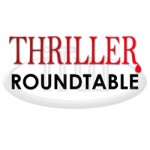 “What does it take for a book to be a thriller?” This week ITW Members Ann Farnsworth, Paul McGoran, John Hegenberger, Patrick Kendrick, Robert McClure, Anthony Schumacher, Earl Javorsky and Judy Penz Sheluk are discussing whether the answer is the stories, global threats, slightly over the top characters, or all of the above?
“What does it take for a book to be a thriller?” This week ITW Members Ann Farnsworth, Paul McGoran, John Hegenberger, Patrick Kendrick, Robert McClure, Anthony Schumacher, Earl Javorsky and Judy Penz Sheluk are discussing whether the answer is the stories, global threats, slightly over the top characters, or all of the above?
~~~~~
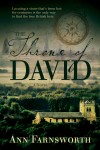 Ann Farnsworth is the mother of 10 kids and one novel. She and her family live in on the outskirts of St. Louis, just blocks from the Missouri River. Ann has been a voracious reader all her life and that hobby has served her well as she discovered a ‘Da Vinci Code’ type story buried in the Old Testament and decided to write a novel about the missing artifact. The THE THRONE OF DAVID was released in August, her book is surpassing all sales expectations and she is now trying to figure out how to write another.
Ann Farnsworth is the mother of 10 kids and one novel. She and her family live in on the outskirts of St. Louis, just blocks from the Missouri River. Ann has been a voracious reader all her life and that hobby has served her well as she discovered a ‘Da Vinci Code’ type story buried in the Old Testament and decided to write a novel about the missing artifact. The THE THRONE OF DAVID was released in August, her book is surpassing all sales expectations and she is now trying to figure out how to write another.
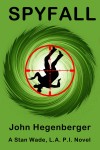 Born and raised in the heart of the heartland, Columbus, Ohio, John Hegenberger is the author of several upcoming series: Stan Wade LAPI in 1959, Eliot Cross Columbus-based PI in 1988, Tripleye, the first PI agency on Mars, and Ace Hart, western gambler in Arizona in 1873. He’s the father of three, tennis enthusiast, collector of silent films and OTR, hiker, Francophile, B.A. Comparative Lit., Pop culture author, ex-Navy, ex-marketing exec at Exxon, AT&T, and IBM, happily married for 45 years and counting.
Born and raised in the heart of the heartland, Columbus, Ohio, John Hegenberger is the author of several upcoming series: Stan Wade LAPI in 1959, Eliot Cross Columbus-based PI in 1988, Tripleye, the first PI agency on Mars, and Ace Hart, western gambler in Arizona in 1873. He’s the father of three, tennis enthusiast, collector of silent films and OTR, hiker, Francophile, B.A. Comparative Lit., Pop culture author, ex-Navy, ex-marketing exec at Exxon, AT&T, and IBM, happily married for 45 years and counting.
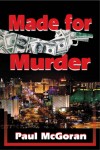 Paul McGoran lives in Newport, Rhode Island. In his lives before fiction, he was a Russian language interpreter for the Navy, a marketing executive, a management consultant, and a day trader. The most satisfactory aspect of fiction writing for Paul is disappearing into the heads of his characters. Writers like him suffer from a kind of multiple personality disorder–minus some of the negative clinical implications. Made For Murder, a noir thriller, is his first novel.
Paul McGoran lives in Newport, Rhode Island. In his lives before fiction, he was a Russian language interpreter for the Navy, a marketing executive, a management consultant, and a day trader. The most satisfactory aspect of fiction writing for Paul is disappearing into the heads of his characters. Writers like him suffer from a kind of multiple personality disorder–minus some of the negative clinical implications. Made For Murder, a noir thriller, is his first novel.
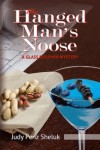 Judy Penz Sheluk’s debut mystery, The Hanged Man’s Noose, was published July 2015. Her short crime fiction is included in The Whole She-Bang 2, World Enough and Crime, and Flash and Bang. In addition to the ITW, Judy is a member of Sisters in Crime, Crime Writers of Canada, and the Short Mystery Fiction Society.
Judy Penz Sheluk’s debut mystery, The Hanged Man’s Noose, was published July 2015. Her short crime fiction is included in The Whole She-Bang 2, World Enough and Crime, and Flash and Bang. In addition to the ITW, Judy is a member of Sisters in Crime, Crime Writers of Canada, and the Short Mystery Fiction Society.
 Earl Javorsky’s first novel, Down Solo, was released in December, 2014, followed by Trust Me this past July. After a long stint trying to make it as a musician in LA and clawing his way up to mid-level management in the chemical entertainment industry (just about killed him), he went back to his first love—writing. He had the good fortune to run into Lou Aronica, his editor at The Story Plant.
Earl Javorsky’s first novel, Down Solo, was released in December, 2014, followed by Trust Me this past July. After a long stint trying to make it as a musician in LA and clawing his way up to mid-level management in the chemical entertainment industry (just about killed him), he went back to his first love—writing. He had the good fortune to run into Lou Aronica, his editor at The Story Plant.
 Tony Schumacher has written for the Guardian and the Huffington Post, and he is a regular contributor to BBC Radio and London’s LBC Radio. He has been a policeman, stand-up comedian, bouncer, jeweler, taxi driver, perfume salesman, actor, and garbage collector, among other occupations. He currently lives outside of Liverpool, The Darkest Hour and The British Lion, both WW2 thrillers, are published by Harper Collins.
Tony Schumacher has written for the Guardian and the Huffington Post, and he is a regular contributor to BBC Radio and London’s LBC Radio. He has been a policeman, stand-up comedian, bouncer, jeweler, taxi driver, perfume salesman, actor, and garbage collector, among other occupations. He currently lives outside of Liverpool, The Darkest Hour and The British Lion, both WW2 thrillers, are published by Harper Collins.
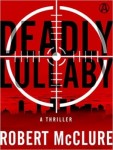 Robert McClure read pulp fiction as a kid when he should have been studying, but ultimately cracked down enough to obtain a bachelor’s in criminology from Murray State University and a law degree from the University of Louisville. He is now an attorney and crime fiction writer who lives and works in Louisville, Kentucky. His story “My Son” appeared in The Best American Mystery Stories, and he has had other works published in MudRock: Stories & Tales, Hardboiled, Thug Lit, and Plots with Guns.
Robert McClure read pulp fiction as a kid when he should have been studying, but ultimately cracked down enough to obtain a bachelor’s in criminology from Murray State University and a law degree from the University of Louisville. He is now an attorney and crime fiction writer who lives and works in Louisville, Kentucky. His story “My Son” appeared in The Best American Mystery Stories, and he has had other works published in MudRock: Stories & Tales, Hardboiled, Thug Lit, and Plots with Guns.
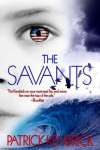 Patrick Kendrick is an award winning author of several thrillers, including: Papa’s Problem, a Florida Book Award and Hollywood Film Festival Award winner. Extended Family, which earned a starred review from Booklist. His newest crime thriller, Acoustic Shadows, was published by HarperCollins in June and is a Royal Palm Literary Award Finalist. The Savants, a sci-fi, political thriller is his first YA novel, and is published by Suspense Publishing. A former firefighter and freelance journalist, he lives in Florida close to the sea.
Patrick Kendrick is an award winning author of several thrillers, including: Papa’s Problem, a Florida Book Award and Hollywood Film Festival Award winner. Extended Family, which earned a starred review from Booklist. His newest crime thriller, Acoustic Shadows, was published by HarperCollins in June and is a Royal Palm Literary Award Finalist. The Savants, a sci-fi, political thriller is his first YA novel, and is published by Suspense Publishing. A former firefighter and freelance journalist, he lives in Florida close to the sea.
- LAST GIRL MISSING with K.L. Murphy - July 25, 2024
- CHILD OF DUST with Yigal Zur - July 25, 2024
- THE RAVENWOOD CONSPIRACY with Michael Siverling - July 19, 2024
